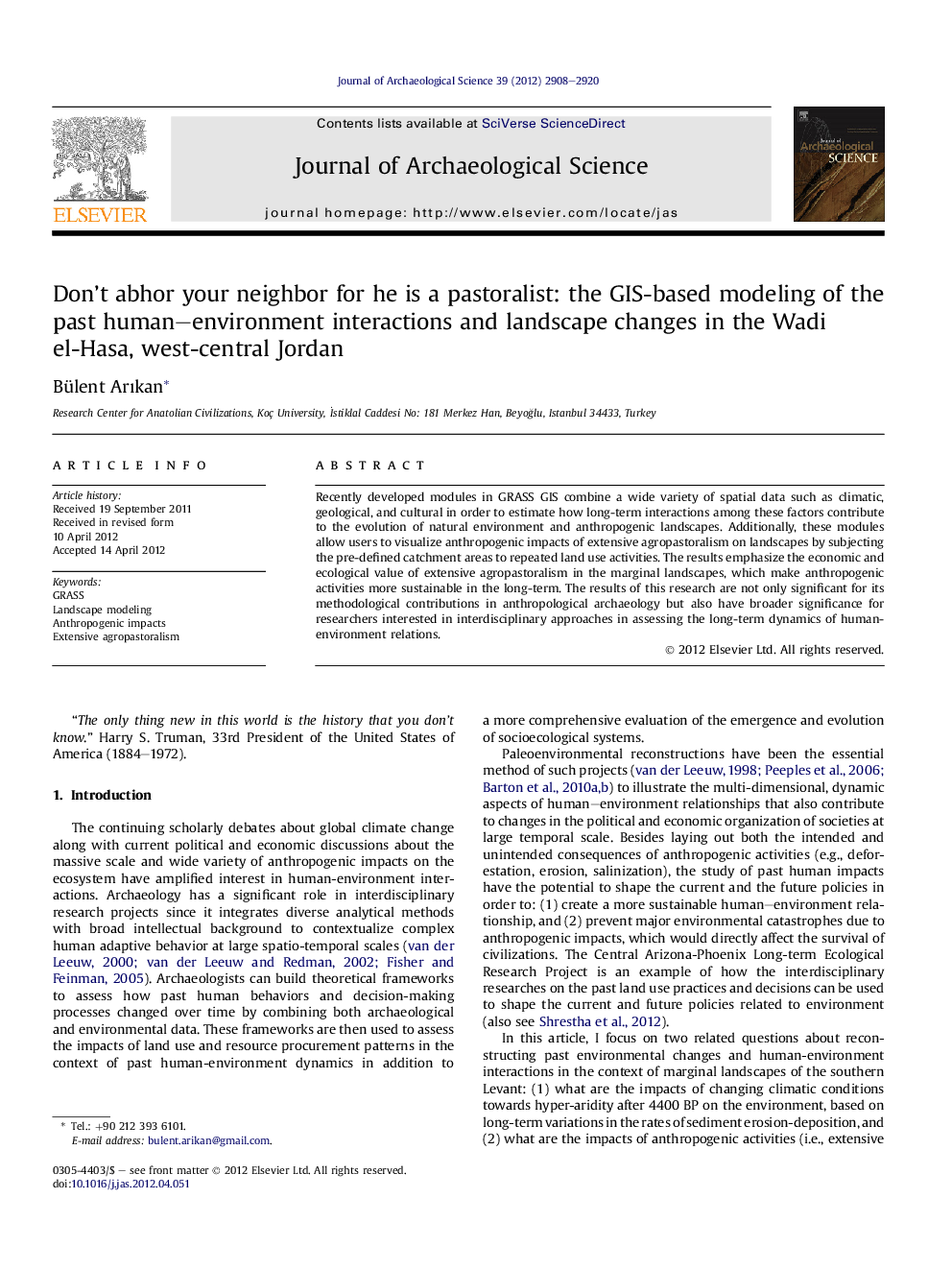| Article ID | Journal | Published Year | Pages | File Type |
|---|---|---|---|---|
| 1035794 | Journal of Archaeological Science | 2012 | 13 Pages |
Recently developed modules in GRASS GIS combine a wide variety of spatial data such as climatic, geological, and cultural in order to estimate how long-term interactions among these factors contribute to the evolution of natural environment and anthropogenic landscapes. Additionally, these modules allow users to visualize anthropogenic impacts of extensive agropastoralism on landscapes by subjecting the pre-defined catchment areas to repeated land use activities. The results emphasize the economic and ecological value of extensive agropastoralism in the marginal landscapes, which make anthropogenic activities more sustainable in the long-term. The results of this research are not only significant for its methodological contributions in anthropological archaeology but also have broader significance for researchers interested in interdisciplinary approaches in assessing the long-term dynamics of human-environment relations.
► Hyper-arid landscape. ► Periodic increases in erosion-deposition rates. ► Succession patterns and changes in the level of biodiversity due to subsistence types. ► The ecological benefits of extensive pastoral land use in the marginal landscapes. ► The role of agropastoralism as a mechanism to ensure the sustainability of socioecosystems.
